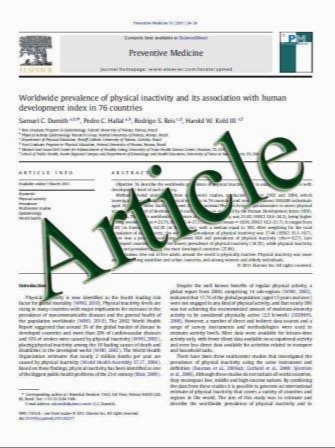Combination of texture analysis and bone mineral density improves the prediction of fracture load in human femurs
- نوع فایل : کتاب
- زبان : انگلیسی
- مؤلف : T. Le Corroller & J. Halgrin & M. Pithioux & D. Guenoun & P. Chabrand & P. Champsaur
- چاپ و سال / کشور: 2011
Description
Summary Twenty-one excised femurs were studied using (1) a high-resolution digital X-ray device to estimate three textural parameters, (2) dual-energy X-ray absorptiometry (DXA) to measure bone mineral density (BMD), and (3) mechanical tests to failure. Textural parameters significantly correlated with BMD (p<0.05) and bone strength (p<0.05). Combining texture parameters and BMD significantly improved the fracture load prediction from adjusted r2= 0.74 to adjusted r2=0.82 (p<0.05). Introduction The purpose of this study is to determine if the combination of bone texture parameters using a new highresolution X-ray device and BMD measurement by DXA provided a better prediction of femoral failure load than BMD evaluation alone. Methods The proximal ends of 21 excised femurs were studied using (1) a high-resolution digital X-ray device (BMA™, D3A Medical Systems) to estimate three textural parameters: fractal parameter Hmean, co-occurrence, and run-length matrices, (2) DXA to measure BMD, and (3) mechanical tests to failure in a side-impact configuration. Regions of interest in the femoral neck, intertrochanteric region, and greater trochanter were selected for DXA and bone texture analysis. Every specimen was scanned twice with repositioning before mechanical testing to assess reproducibility using intraclass correlation coefficient (ICC) with 95% confidence interval. The prediction of femoral failure load was evaluated using multiple regression analysis. Results Thirteen femoral neck and 8 intertrochanteric fractures were observed with a mean failure load of 2,612 N (SD, 1,382 N). Fractal parameter Hmean, co-occurrence, and run-length matrices each significantly correlated with site-matched BMD (p<0.05) and bone strength (p<0.05). The ICC of the textural parameters varied between 0.65 and 0.90. Combining bone texture parameters and BMD significantly improved the fracture load prediction from adjusted r2=0.74 to adjusted r2=0.82 (p<0.05). Conclusion In these excised femurs, the combination of bone texture parameters with BMD demonstrated a better performance in the failure load prediction than that of BMD alone.
Osteoporos Int DOI 10.1007/s00198-011-1703-1 Received: 23 March 2011 / Accepted: 16 June 2011


